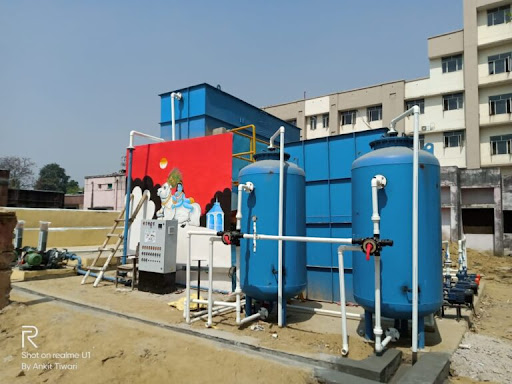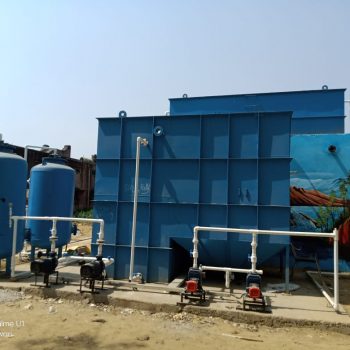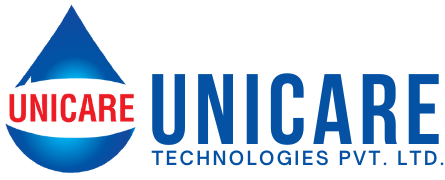
Sewage Treatment Plant (STP) Manufacturers in India
Unicare Technologies is a leading manufacturer and supplier of Sewage Treatment Plants & Effluent Treatment Plant (ETP) in India. We offer innovative solutions that are designed to meet the needs of our customers and contribute toward a cleaner, greener and more sustainable environment.
Unicare water understands the complexities of running a business in today’s world – that’s why we offer a full range of services to give you peace of mind in everything related to water. We have solutions for every requirement – from drinking water to sewage treatment plants.
We manufacture Sewage Treatment Plants (STP ) in India that come in various sizes, for different capacities and for different purposes for domestic, commercial, and industrial use.
Our products are flexible enough to facilitate septic tank emptying, rainwater harvesting and other various requirements.We are an ISO 9001:2000 certified company with a range of solutions to choose from – to keep your surroundings safe and healthy.
What is a Sewage Water Treatment Plant?
The sewage water treatment {STP) or Wastewater treatment is a way of treating wastewater from homes and industries. It is the process of removing contaminants and other impurities from wastewater. The sewage water treatment is done in a number of different ways, such as through physical, chemical and biological methods.
Sewage water treatment plants are built to handle large volumes of waste. They use a variety of processes to remove harmful substances from the waste before releasing it back into nature or returning it to the community.
Benefits of Using the Best Sewage Water Treatment Plant?
- Cost-effective to install, operate, and maintain.
- An effective way to reduce waste output in our environment.
- It is the best option to use the contaminated water in a better way.
- Reliable & Reduces risk to health.
- Capable of removing 97% of suspended solids.
- Customize the plant as per your needs.

3 Stages of Sewage Treatment Process
Sewage or wastewater undergoes several stages in its treatment process for the recycling of wastewater before it is released into the environment. The process is usually done by using a combination of physical, chemical and biological processes.
The first stage of the process is called Primary Treatment. This stage removes organic material and large particles from the water by letting them settle at the bottom of a large tank or basin called a clarifier.
The second stage of treatment, Secondary Treatment, removes dissolved organic material and other pollutants that are still suspended in the water through biological processes like oxidation, coagulation and filtration. In the final stage of treatment, Tertiary Treatment removes any remaining suspended solids from the water by using gravity settling tanks or filters.
Why Are Sewage Treatment Plants Required?
The first thought for anyone planning a new development should be connecting to the main sewers. They are typically the most cost-effective method of dealing with your wastewater. However, getting a mains sewer connection isn’t always possible.
In some scenarios, the distance from the nearest sewer or the layout of the land can make it impossible to have your property serviced by the main sewer. That’s where sewage treatment plants and other alternatives come in. The operation of a sewage treatment plant means that you can have one installed almost anywhere, as long as you have an electrical connection.
Why Unicare is the best In STP Plants Manufacturing Company in India?
We offer Various treatment technologies to treat this sewage such as:
- E.A. (Extended Aeration)
- SAFF (Submerged Aeration Fixed Film)
- SBR (Sequential Batch Reactor)
- MBBR (Moving Bed Bio Reactor)
- MBR (Membrane Bio Reactor

FAQS
There are several common issues that can arise in a sewage treatment plant:
Mechanical problems: Sewage treatment plants rely on various mechanical equipment such as pumps, valves, and blowers. These can experience issues such as wear and tear, clogging, or electrical failures, which can cause disruptions in the treatment process.
Inadequate treatment: If a treatment plant is not properly designed, constructed, or maintained, it may not be able to effectively remove all the pollutants from the wastewater. This can lead to environmental and health risks if the treated water is discharged into a water body or reused.
Poor performance during heavy rainfall: Heavy rainfall can cause the plant to receive more wastewater than it can handle, leading to overloading and reduced treatment efficiency. This can also result in the release of untreated or partially treated wastewater into the environment.
Contamination of the treated water: If the treated water is not properly disinfected, it can still contain harmful pathogens, leading to health risks if the water is reused or discharged into a water body.
Energy consumption: Sewage treatment plants require a significant amount of energy to operate. Issues such as inefficient equipment, leaks, or poor maintenance can result in increased energy consumption, leading to higher operational costs and greenhouse gas emissions.
Odor and air pollution: Sewage treatment plants can emit unpleasant odors and air pollutants such as hydrogen sulfide and volatile organic compounds, which can negatively affect the surrounding community's quality of life.
Aging infrastructure: Many sewage treatment plants were built decades ago and may have aging infrastructure, which can lead to structural damage, leaks, and failures. Regular maintenance and upgrades are essential to keep the plant functioning effectively and safely.
The construction time for a sewage treatment plant can vary widely depending on several factors such as the plant's size, treatment technology, location, and the regulatory permitting process.
A small-scale sewage treatment plant that serves a small community or a single building may take only a few months to construct, while a large-scale plant that serves a large city or region can take several years to build.
The construction process typically involves several stages, including design, permitting, site preparation, excavation, foundation work, equipment installation, and commissioning. The design and permitting stages alone can take several months to several years, depending on the complexity of the project and the regulatory requirements.
In general, a small to medium-sized sewage treatment plant may take anywhere from 6 to 24 months to build, while a large-scale plant can take 2 to 4 years or longer. The construction time can be affected by various factors such as weather conditions, material availability, construction challenges, and unforeseen issues that may arise during the construction process.
There is no single "best" sewage treatment method as the optimal treatment approach depends on several factors such as the composition of the wastewater, the desired level of treatment, and the available resources. However, some common sewage treatment methods include:
Conventional activated sludge: This is a common method that uses biological processes to remove organic matter and nutrients from wastewater.
Membrane bioreactors (MBRs): MBRs use a combination of biological processes and membrane filtration to remove contaminants from wastewater.
Sequencing batch reactors (SBRs): SBRs are a type of activated sludge process that uses a series of batch processes to remove contaminants from wastewater.
Constructed wetlands: This method uses natural processes and plants to remove pollutants from wastewater.
The importance of sewage treatment cannot be overstated. Sewage treatment plays a critical role in protecting public health and the environment by removing harmful pollutants and pathogens from wastewater. Proper treatment of sewage prevents the contamination of water bodies, which can have negative impacts on aquatic ecosystems and human health. Sewage treatment also helps to conserve water resources by enabling the safe reuse of treated wastewater for irrigation, industrial processes, and other non-potable uses. Additionally, sewage treatment can produce energy and valuable resources such as biogas and biosolids that can be used for energy production, soil amendment, and other applications.
SBR (Sequencing Batch Reactor) sewage water treatment plants offer several advantages that make them a popular choice for wastewater treatment. Here are some reasons why one may choose an SBR sewage water treatment plant:
Efficient use of space: SBR sewage water treatment plants require less space compared to other treatment methods, making them ideal for small to medium-sized treatment facilities or areas with limited space.
Flexible design: SBR sewage water treatment plants can be designed to accommodate varying wastewater loads, making them suitable for both residential and industrial applications.
High treatment efficiency: SBR sewage water treatment plants can achieve high levels of treatment efficiency by incorporating multiple stages of treatment in a single reactor. This makes them capable of removing a wide range of contaminants, including organic matter, nutrients, and pathogens.
Reduced sludge production: SBR sewage water treatment plants produce less sludge than other treatment methods due to their high treatment efficiency and use of advanced technologies.
Low operating costs: SBR sewage water treatment plants require less energy and chemicals compared to other treatment methods, resulting in lower operating costs and environmental impacts.
Easy operation and maintenance: SBR sewage water treatment plants are relatively easy to operate and maintain, requiring minimal training and expertise.
Overall, SBR sewage water treatment plants offer a cost-effective and efficient solution for wastewater treatment that can meet the needs of a wide range of applications.
STP (Sewage Treatment Plant) and ETP (Effluent Treatment Plant) are two types of wastewater treatment systems that are designed to treat different types of wastewater.
STP is designed to treat domestic sewage or wastewater generated from households, offices, and commercial establishments. The primary objective of STP is to remove organic matter, nutrients, and pathogens from the wastewater to make it safe for discharge into the environment or reuse.
ETP, on the other hand, is designed to treat industrial effluent or wastewater generated from industrial processes such as manufacturing, food processing, and chemical production. The wastewater generated from industrial processes can contain a wide range of pollutants such as heavy metals, chemicals, and organic compounds that require specialized treatment methods to remove.
The key differences between STP and ETP are:
Type of wastewater: STP treats domestic sewage, while ETP treats industrial effluent.
Treatment objectives: STP focuses on removing organic matter, nutrients, and pathogens from wastewater, while ETP targets specific pollutants that are present in industrial effluent.
Treatment technologies: STP primarily uses biological treatment methods such as activated sludge, while ETP may use a combination of physical, chemical, and biological treatment methods, depending on the type and concentration of pollutants.
Regulatory requirements: The discharge standards for treated wastewater from STP and ETP are different, as they are based on the specific characteristics of the wastewater and the regulatory requirements for the discharge of wastewater into the environment.
In summary, STP and ETP are two different types of wastewater treatment systems that are designed to treat different types of wastewater with different treatment objectives and technologies.
There are three primary types of sewage treatment:
Primary Treatment: Primary treatment is the first stage of sewage treatment and involves physical processes to remove large solid particles and debris from the wastewater. The wastewater is passed through screens to remove large objects such as rocks, sticks, and plastics. After screening, the wastewater flows into a sedimentation tank where the heavier solid particles settle to the bottom and are removed.
Secondary Treatment: Secondary treatment is the second stage of sewage treatment and involves biological processes to remove organic matter, nutrients, and pathogens from the wastewater. In this stage, the wastewater is mixed with bacteria and other microorganisms that break down the organic matter and nutrients into simpler compounds. The wastewater then flows into a secondary sedimentation tank where the microorganisms settle to the bottom and are removed.
Tertiary Treatment: Tertiary treatment is the final stage of sewage treatment and involves advanced processes to further improve the quality of the treated wastewater. Tertiary treatment can include a range of physical, chemical, and biological processes to remove remaining pollutants and pathogens. This stage may include processes such as sand filtration, disinfection, and activated carbon absorption. Tertiary treatment is typically used when the treated wastewater is to be reused for non-potable applications such as irrigation or industrial processes.
Overall, the three stages of sewage treatment work together to remove pollutants and pathogens from the wastewater and produce treated water that is safe for discharge into the environment or reuse for non-potable applications.
